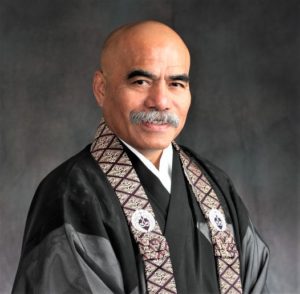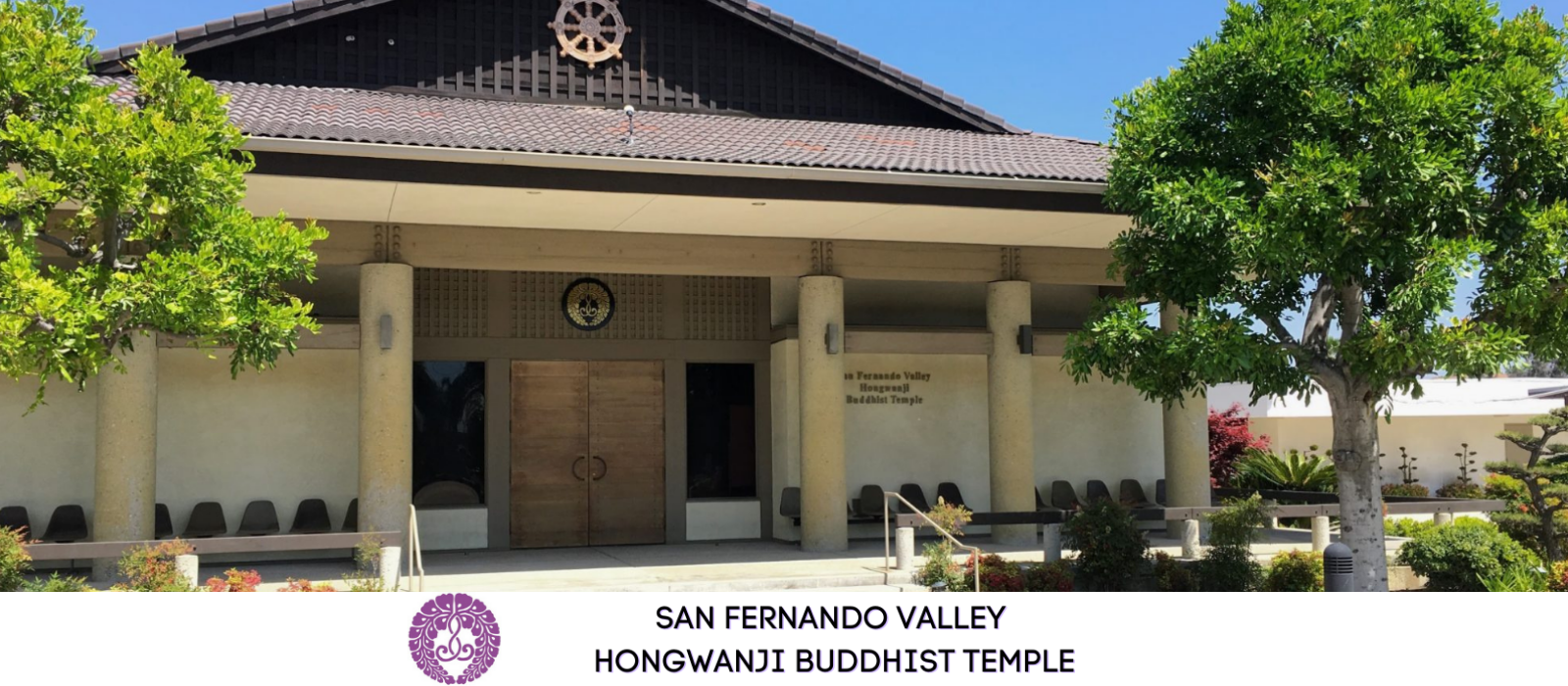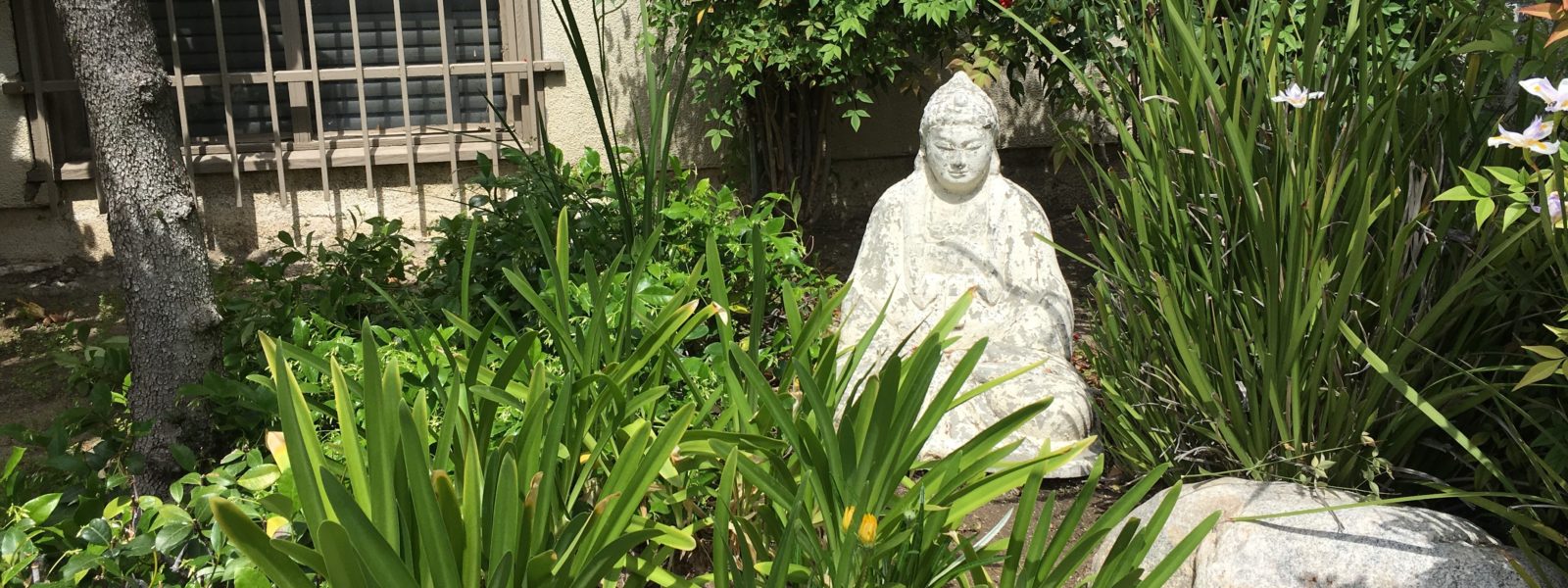Thoughts on Myths

William Briones, Rimban, Los Angeles Hompa Hongwanji Buddhist Temple and Supervising Minister, SFVHBT
Recently I was asked to participate on a panel of faith leaders representing the major religious groups: Christianity, Judaism, Islamic, and Hindu. As interfaith dialogs go, it was very “enlightening.” Of course there are similarities among the religions—compassion and respect for everyone, peace, and non-violence—to name a few. But for Buddhism, our differences far outnumber the similarities. One big difference is that we do not believe in a god, one that created, is omnipotent and omniscient. Shakyamuni and Amida Buddha are not gods, nor deities.
When I began my path in Jodo Shinshu Buddhism over 45 years ago, I was a bit confused about the historical Buddha, Shakyamuni, and Amida Buddha, the Buddha that the Pure Land Buddhist reveres as the main object of reverence.
Shakyamuni Buddha, whose life story is depicted on the walls of the Los Angeles Hompa Hongwanji Betsuin, is the historical Buddha who lived over 2,500 years ago, almost 550 years before Jesus Christ was born. And at the age of 29, the Prince gave up his worldly possessions and set out on a long journey in search of a path that would lead to the end of suffering.
We’re all familiar with this story … it’s relatively easy to understand. Shakyamuni is the historical Buddha, a human being. He was the one who pointed out the possibilities of enlightenment through his own quest for religious liberation and truth.
The story is the foundation for all Buddhist Tradition. The goal for all Buddhists is to be awakened. After all, the Buddha does mean “the awakened one.” All Buddhists use Shakyamuni’s teachings as the foundation of their doctrine: the Four Noble Truths, the Eightfold Noble Path, the Three Characteristics of Buddhism, the teaching of Dependent Origination.
It is said in the Larger Sutra that soon after becoming enlightened, Sakyamuni gave a sermon on Vulture Peak, accompanied by 12,000 monks and innumerable bodhisattvas. At that time, Sakyamuni Buddha appeared majestic and brilliant. Ananda, Sakyamuni’s right-hand man, saw how wonderful he looked and asked him if he was dwelling in the supreme Samadhi and contemplating all the Buddhas. Sakyamuni praised Ananda’s observation and began to reveal to the gathering the wonderful Dharma.
So the story goes: In the distant past the Buddha Dipankara appeared in the world, followed by 53 other Buddhas, the last being the Buddha Lokesvararaja. And it was during this time there lived a king who heard Lokesvararaja’s exposition on the dharma. He was so impressed that he renounced his throne and became a monk named Dharmakara. After praising the Buddha with a hymn (Sanbutsuge), he expressed his resolution to become a Buddha. After contemplating for five kalpas, Dharmakara formulated his 48 vows. After proclaiming his vows, he again offered praise with a hymn (Juseige). In order to fulfill his vows, he performed various meritorious practices for many kalpas, but finally became a Buddha, known as Amida Buddha.
However, many of us find it difficult to accept this cosmological story that took place several eons ago. For myself, my understanding of Dharmakara is that he is a mythical hero. His story represents the deepest aspirations of the human heart that some day all of us will be free of suffering. Amida is a symbol of reality and points to our interdependence with all things and the need to share with others.
For sure, myths are entertaining stories. But myths are or were much more than that. For in their time, myths can serve many important functions for the society and culture that believe in them. We can see the myths as symbolic stories about the relationship between humans and the natural world, between humans and other humans, or between individual humans and phenomena.
Myths carry with them an essential element of authority. The stories they tell are unproven, but they were also unquestioned by the culture that gave rise to them.
Myths address truths ranging from the creation of the universe, the earth, and human beings, to some jolly fat man in a red suit giving presents to good boys and girls, to a red demon with horns and a pointy tail and pitchfork. Whether accepted literally or examined for their “deeper” meaning, these myths offered insight to all people, ancient or modern.
Stories are the same since the beginning. Hopefully, we have developed spiritually and have a different understanding as we mature.
According to our founder, Shinran Shonin, Shakyamuni Buddha appeared in the world to tell us about Amida Buddha. So it is within our tradition of Jodo Shinshu that the main object of reverence is Amida Buddha.
The content or the essence of Shakyamuni’s Enlightenment is none other than Infinite, Inconceivable, Immeasurable Light and Life. These are the very words that describe the essence of Amida Buddha. Then Amida
Buddha, being Wisdom and Compassion, is a Buddha who manifests the meaning of ultimate Enlightenment.
So you see, Amida is the embodiment of all the realities that we consider basic Buddhist tenets—impermanence, interdependence, non-duality—these are very dynamic in trying to awaken us to the reality of human life.
There is a term that we use in Jodo Shinshu that conveys this skillful means, Hoben Hosshin. It’s the expediency of Amida Buddha to awaken us from our ignorance and delusions. It’s a way of guiding us to the truth. It’s only a symbol to help us try to comprehend the abstract. It is a reminder that Amida is not a divine being nor a god, but only a symbol of compassion and wisdom. Otherwise, we may start to worship Amida, rather than being liberated by Amida.
To entrust our life in Amida Buddha, we must realize that the real Buddha goes beyond the symbol of Amida Buddha, goes beyond the statue, the portrait, and even the Name. We must encounter that experience. We can’t become attached to the symbol as if it were the Buddha itself. We must go beyond the symbol.
Buddha is everywhere for those who are able to taste the Dharma in realizing this true self and reality of life in whatever form or shape one faces in daily life.

